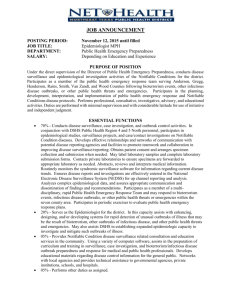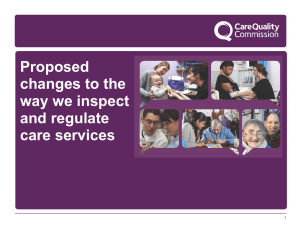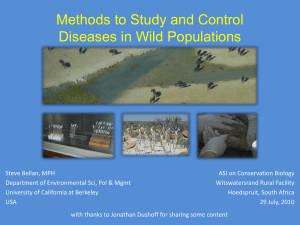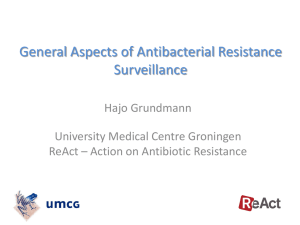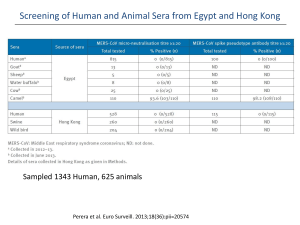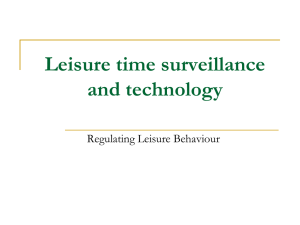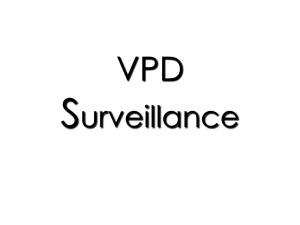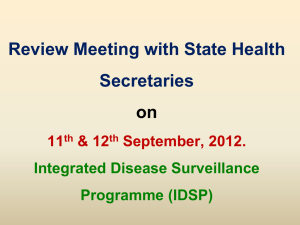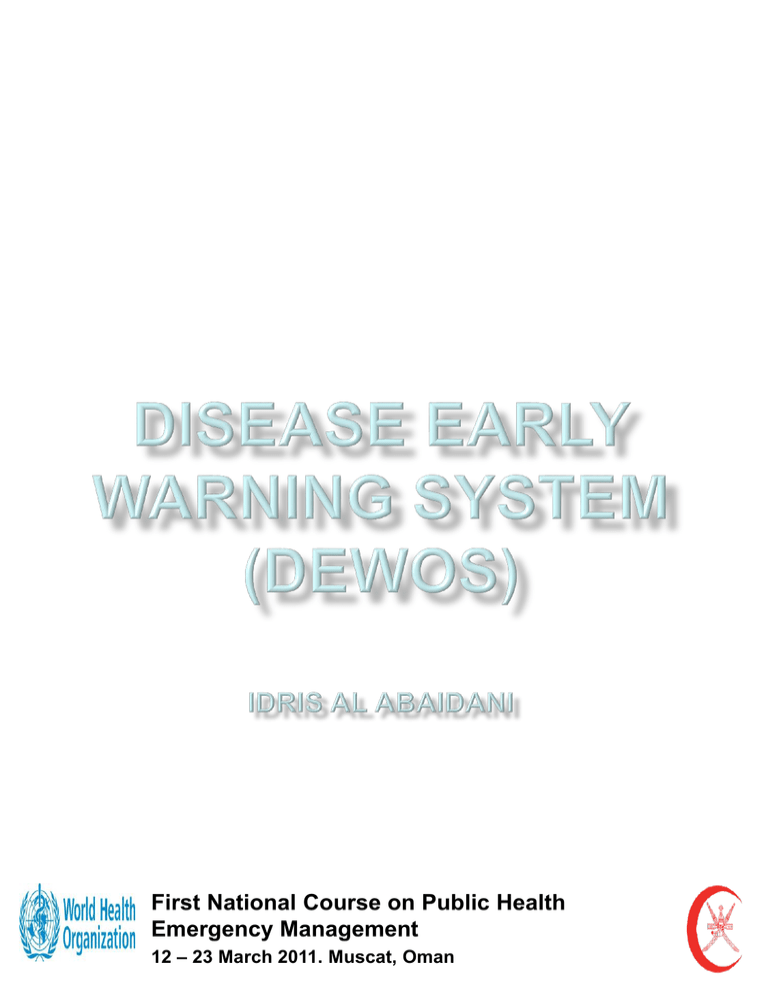
First National Course on Public Health
Emergency Management
12 – 23 March 2011. Muscat, Oman
• Objectives & expectations
• Outline of the presentation
• Case Study
• Communicable disease (CDs)
accounts for 51-95% of all reported
deaths in refuge camps.
• CDs Alone or in combination with
malnutrition, are major killers in
conflict-affected settings
• Death rates among refugees and
displaced persons significantly
above the baseline have been
recorded in many conflicts and over
three quarters of these deaths may
be due to CDs
• A communicable disease may be
defined as an illness that arises from
transmission of an infectious agent or
its toxic product from an infected person,
animal, or reservoir to a susceptible
host, either directly or indirectly through
an intermediate plant or animal host,
vector, or environment.
• Infectious Agent: Bacteria, viruses, fungi
or parasites or their products that can
cause disease.
• Susceptible Host: Person or animal not
possessing sufficient resistance against a
particular infectious agent to prevent
contracting infection or disease when
exposed to it.
Equilibrium between the Population,
Infectious agent and the environment
• A disease epidemic or
outbreak: is the occurrence of
cases of a particular disease in
excess of the expected,
therefore, demanding that
emergency control measures
be implemented.
• Likelihood for transmitting disease
• Risk of dying or becoming ill within
population
• Anytime among displace
populations
• Main cause during
emergencies are:
– Acute respiratory infections (ARI)
– Measles
– Diarrheal diseases
– Malaria (endemic areas)
Environment:
● Loss of shelter
● Location of temporary housing /
overcrowding / poor ventilation
● Lack of water (or contaminated
water)
● Inadequate sanitation
● Disruption of public utilities (e.g.
electricity, water
and sewage
treatment)
● Increased exposure to disease
vectors (e.g.
mosquitoes, fleas,
lice)
● Population displacement from low to
high
endemic area (e.g., malaria)
● Lack of access to health services
● Poor surveillance/response systems
● Ongoing conflict preventing control
Host:
● Low immunity
● High proportion of vulnerable:
young children/
pregnant
women / elderly
● High levels under-nutrition /
malnutrition
● Low levels vaccination coverage
● HIV seroprevalence
● Underlying chronic diseases, comorbidities
Increased incidence of endemic diseases high morbidity and mortality e.g. malaria,
ARI, diarrhoeal diseases, TB and HIV/AIDS.
Increased risk of epidemics - over 65% of
outbreaks of international importance occur
in conflict-affected settings – population
displacement, overcrowding, malnutrition,
poor water/sanitation. e.g. cholera, bacillary
dysentery, measles.
Increased duration of epidemics - delays in
detection, poor access to health care, lack
of drugs/vaccines, lack of expertise
Drug resistance can emerge
rapidly eg TB, shigellosis
– Inappropriate diagnosis
– Use of outdated drugs/lack of
quality control
– Inappropriate drug regimens
– Disruption of treatment/poor
compliance due to
• Purchasing inadequate quantities, selling
drugs, saving drugs for future
• interrupted treatment due to displacement
Emerging diseases pose major
threat – eg Monkey Pox, Ebola,
Marburg.
Eradication and elimination
efforts threatened e.g. polio,
Guinea Worm
● Type of disaster /
Geographical area / Level of
development of the disasteraffected region
● In the immediate aftermath of
a disaster, most deaths are
due to trauma and drowning.
● Communicable Diseases
caused mostly by secondary
effects and NOT by primary
hazard.
● May be an increase in
epidemic diseases such as
cholera, bacillary dysentery or
meningitis, or endemic
diseases such as malaria,
acute respiratory infections
● Natural disasters rarely cause
large scale epidemics unless
population displacement and
overcrowding
● Pathogens present in
the area
● Environmental changes
can increase vector
breeding sites (rats,
mosquitoes)
● Loss of
water/sanitation/power
supplies (waterborne
diseases)
● Overcrowding
● Food shortages /
malnutrition / health
status
● Disruption / destruction
of health services
• Ongoing systematic collection,
analysis, and interpretation of data
which is essential for planning,
implementation and evaluation of
public health practice.
• Case definition
• Epidemic thresholds: the minimum
number of cases indicating the
beginning of an outbreak of
particular disease.
– Weekly incident rate
– AR: the proportion of those
exposed to an infectious agent
who become ill.
Early warning systems are in most instances,
timely surveillance systems that collect
information on epidemic-prone diseases in order
to trigger prompt public health interventions.
However, these systems rarely apply statistical
methods to detect changes in trends, or sentinel
events that would require intervention. In most
cases they rely on an in-depth review done by
epidemiologists of the data coming in, which is
rarely done in a systematic way. WHO is
strengthening the existing surveillance systems
for infectious diseases developing early warning
systems based on the new concepts and
techniques
Source:
http://www.who.int/csr/labepidemiology/projects/e
arlywarnsystem/en/
• To detect outbreaks / epidemicprone diseases and implement
early response
• To monitor diseases of high
morbidity and mortality and
define health priorities on the
basis of health data
• To evaluate actions taken
• To predict, detect and confirm
outbreaks of public health
importance in a timely fashion
and to disseminate that
information to those who need
to know so that effective public
heath action can be taken
● Close collaboration with authorities and
partners from the start – create network
● Small number of priority diseases
● Syndromic reporting
● Simple case definitions
● Processes for dealing with alerts
("rumours")
● Rapid case investigation and sampling
● Rapid laboratory confirmation
● Standard procedures for information
sharing and initiation of response
● Preparedness plans in place
● Emergency medical and surgical care
● Safe water and adequate
sanitation/hygiene
● Provision of safe food
● Provision of shelter (site planning)
● Immunization (measles = 1st priority, later
restart routine EPI)
● Access to 1° & 2° health services (case
management)
● Disease surveillance/outbreak
preparedness & control
● Vector control
● Environmental sanitation / waste disposal
● Health education
Date: June 13th, 2007
• A circular were
issued in this regards
to all health care
workers in order to
raise their index of
suspicious towards
possible outbreaks
as consequences of
utilizing wadis waters
Post-Gonu Communicable Disease Surveillance & Control
Case Definitions & Diagnostic Criteria
Cholera
Water borne/food borne disease, incubation 0-5 days
Clinical case Definition: In an area where the disease is not known to be present acute profuse
watery diarrhea with severe dehydration or death in a patient aged 5 years or more.
Laboratory Criteria:
Stool microscopy: typical motility observed in hanging drop preparation
Stool culture: isolation of v. cholerae (biochemical tests, serotyping, biotyping)
Typhoid
Water borne/food borne disease, incubation 8-14 days
Clinical Case Definition: Insidious of sustained fever, headache, malaise, anorexia, relative
bradycardia, rose spots on the trunk, splenomegaly and constipation rather than diarrhea in
adults
Laboratory criteria: Positive culture of Salmonella from stool/urine/blood OR fourfold rise in
agglutination titer in paired sera taken 10 days apart
Hepatitis A
Water borne/food borne disease, incubation 10-50 days
Case Definition: Suspect: Acute onset of jaundice (icterus) with following laboratory criteria
presence of bile salts &/or bile pigments in urine or altered Liver Function Tests (LFT).
Laboratory criteria: IgM/Anti-HAV positive (send samples to CPHL, Darsait)
Leptospiriosis
Water borne/food borne disease, incubation 10 days
Clinical case Definition: Acute febrile illness with headache, myalgia and prostration associated
with any of the following symptoms: conjunctival suffusion, meningeal irritation, anuria or
oliguria and/or proteinuria, jaundice, hemorrhages (from the intestines; lung bleeding is
common in some areas), cardiac arrhythmia or failure, skin rash and a history of exposure to
infected animals or an environment contaminated with animal urine.
Laboratory criteria: Leptospirosis serology positive test (send samples to CPHL, Darsait)
Director General of Health Services
All Governorates and Regions
Executive Directors
All Referral Hospitals
Re: Post-Gonu Scenario: Monitoring Status & Communicable Disease Outbreaks…
After complements,
You are aware of the disaster situation following the tropical storm ‘Gonu’ that hit the
country recently. The most affected regions were the Muscat Government, South Sharqiyah
and South Batinah Region resulting in shortage of potable water as well as power. It came
to our notice that people in the affected areas are using stagnated and Wadi water for
washing, swimming or even drinking purpose. As a consequence there may be a risk of
waterborne infections such as diarrhoeal diseases including cholera, typhoid, viral hepatitis
A etc. although the risk of cholera in Oman is presumed minimal. Standard case definitions
for these epidemic-prone diseases that are common during the storm aftermath are
attached.
For the purpose of monitoring and reporting health related events and/or outbreak due to
these diseases a reporting template has been developed (enclosed). The selected sentinel
health institutions in the affected regions as listed below should fill-in required details and
fax the form to their Directorate and the DCDSC on daily basis (‘Zero’ reporting) until
further notice.
Muscat Governorate: Khaula Hospital, Bowsher PC, Sifa HC, Yeti HC, Qurayat
Hospital, Ibn Sina Hospital, Matrah HC, Muscat HC, Al Shadi HC, Azaiba HC
South Sharqiyah Region: Sur Hospital, Sur Polyclinic, Ras Al Hadd HC, Tiwi HC, Al
Ashkara HC
South Batinah Region: Barka PC, Mussanah PC
Kindly do not hesitate to communicate with Dr Salah Al Awaidy (99315063) or Dr Idris Al
Abaidani (95224261)/Dr Shyam Bawikar (99368327)/Mr Salem Al Mahrooqi (99029195)
and Dr Suleiman Al Busaidy (for laboratory support 99426288; Tel. 24705943 Fax:
24793899) on their mobile or on the following office numbers of the Department
24601921, 24607524; Fax: 24601832 for further information, clarification or assistance.
With best wishes.
• Zero reporting to
be send form the
health
centers/polyclinics
(sentinel sites)in
the affected areas
on daily bases to
Dept.CDS&C in
order to monitor
trends of
symptoms related
to epidemic-prone
diseases viz
waterborne
diseases.
Directorate General of Health Affairs, Ministry of Health, Oman
Department of Communicable Disease Surveillance & Control
DAILY 24 Hrs. REPORTING FORM
(Mention 'zero' if no cases)
Name of the Reporting Sentinel Site…………………………………………………………………….….
Date
Age
group
< 5 yr
12-Jun
5-12 yr
> 12 yr
< 5 yr
13-Jun
5-12 yr
> 12 yr
< 5 yr
14-Jun
5-12 yr
> 12 yr
< 5 yr
15-Jun
5-12 yr
> 12 yr
< 5 yr
16-Jun
5-12 yr
> 12 yr
< 5 yr
17-Jun
5-12 yr
> 12 yr
< 5 yr
18-Jun
5-12 yr
> 12 yr
< 5 yr
19-Jun
5-12 yr
> 12 yr
< 5 yr
20-Jun
5-12 yr
> 12 yr
Number of cases of…
Diarrhoea
Jaundice
Fever of unknown origin
Incidence of Influenza Like Illnesses
(ILI) cases reported, Oman, 2006 2010
250000
200000
150000
100000
50000
Jan
Apr
Jul
Oct
Jan
Apr
Jul
Oct
Jan
Apr
Jul
Oct
Jan
Apr
Jul
Oct
Jan
Apr
Jul
Oct
0
2006
2007
2008
2009
2010
Communicable diseases
surveillance in complex
emergencies
• Province X with total population of 2
million was affected by a major
earthquake on 20 of Feb 2011 at 2 am.
The epicentre of the earthquake was
located near the capital city of the
province (500,000 inhabitants). Extensive
loss of life, property, and livelihood in 14
of the 21 districts of the province left a
large segment of the population without
basic needs and vulnerable to epidemicprone diseases. As of 15 March 2011,
Province X reported that 26,602 bodies
had been buried; 13,638 people were
missing; and 514,150 were displaced in
20 districts/cities in the capital city. In the
public sector, 53 of 244 health facilities in
the capital city were destroyed or
severely incapacitated and 42 of 481
Provincial Health Office (PHO) staff died.
This disaster occurred in the context of
30 years of civil unrest which had severe
social and economical consequences for
the province.
Q1) What are the objectives of this
surveillance / early warning
system
Q2)What are the basic data you
want to get before implementing
the surveillance system in
complex situation?
Q3)What specific data on the
health events would you want
collected?
Q4) What sources of information
would be useful in setting up this
surveillance system?
Q5) What health events would
you want to monitor in the
surveillance system?
Q6) How frequently would you
want the health data reported?
Q7) How do you analyse the
data?
• Q1) What are the objectives of
this surveillance / early warning
system?
– To detect outbreaks / epidemicprone diseases and implement
early response
– To monitor diseases of high
morbidity and mortality and
define health priorities on the
basis of health data
– To evaluate actions taken
Q2) What are the basic data you
want to get before
implementing the surveillance
system?
– Population figures, and by:
– Age
– Sex
– Location
– Population movements
– Specific groups at higher risk
(orphans, single women)
Q3) What specific data on the
health events would you want
collected?
– Time, Place, Person
– Information should be tailored to
the situation: Age (<5 years, >5
years), gender, location of
residence, location of healthcare
interaction, diagnosis and
information sufficient to identify
the reporter are commonly
included.
Q4) What sources of information
would be useful in setting up this
surveillance system?
– Health facilities: hospital
admissions, OPD attendances,
fixed/mobile clinics
– Laboratory
– Grave diggers, 24 hour graveyard
watches, morgue, death registers
– Community leaders
– Traditional healers
– Birth attendants
– Home visitors, community health
workers
– Informal sources: e.g. telephone
calls from reporters, media reports,
reports from the public, etc.
Q5)What health events would you want to
monitor in the surveillance system?
– Total number of deaths. Ultimate
criterion to judge gravity of a situation.
– Deaths from diarrhoeal diseases,
measles, pneumonia, fever/malaria,
meningitis, anaemia, malnutrition,
injuries
– Cases of diarrhoeal diseases,
measles, pneumonia, fever/malaria,
meningitis, anaemia, malnutrition,
injuries.
– Syndrome-based rather than individual
disease-based.
– Limited number based on impact on
morbidity and mortality, epidemic
potential and existence of control
measures
6) How frequently would you
want the health data reported?
– Daily in the acute phase of an
emergency.
– Weekly once the CMR reduces
to that of the surrounding
population. The diagnosis of a
case of a highly contagious
diseases e.g., cholera,
meningitis, measles, however
should be urgently reported to
the health co-ordinator.
– Zero reporting
– Feed back on the same basis.
– Information to your hierarchy on
the same basis.
Q7) How do you analyse the
data?
• Data treatment
– Centralization of the data
– Calculation of indices (rates,
ratio, proportion…)
– Data presentation according to
place, time, people: tables,
figures (templates)
• Data Analysis
– aggregated information
– information per location, groups
of people, and in the time
• Mortality:
– Rates (crude and rates per cause,
age, gender, location)
– CFR
• Morbidity:
– number of cases / diseases or
syndromes
– incidence / disease (age, gender and
location)
• Use of thresholds:
– Severity of the situation (CMR; >
1/10000/day ; under 5 > 2/10000/day)

